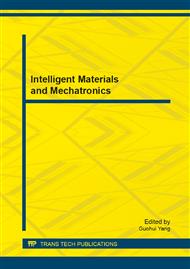p.171
p.179
p.184
p.189
p.194
p.199
p.203
p.209
p.215
Optical Characterization of Chrysotile for the Real Time Detection
Abstract:
We measured chrominance of chrysotile powder using a colorimeter and a luminance meter under different light sources with seven color filters to test feasibility for the real time asbestos detector development. Chrysotile powder was prepared by heating asbestos fabric at 150 °C for 1hr and hydrochloric acid treatment was followed to remove other elements. Refractive index liquid was used as a color changing analyte to observe the change in chrominance of chrysotile. From the measurements, it revealed that a colorimeter was more suitable for the chrysotile detection by the maximum change in chrominance, especially in the short wave length range of blue regions. A luminance meter was not able to separate the difference in chrominance depending on different color and light sources regardless dyeing. It might be due to that reflected light from chrysotile particle was relatively weaker than that from illuminated area. It is our suggestion that the real time monitoring of asbestos in indoor air can be possible using a color sensor, specified to the unique wavelength of dyed chrysotile based on our chrominance data.
Info:
Periodical:
Pages:
194-198
Citation:
Online since:
November 2013
Authors:
Keywords:
Price:
Сopyright:
© 2014 Trans Tech Publications Ltd. All Rights Reserved
Share:
Citation:


